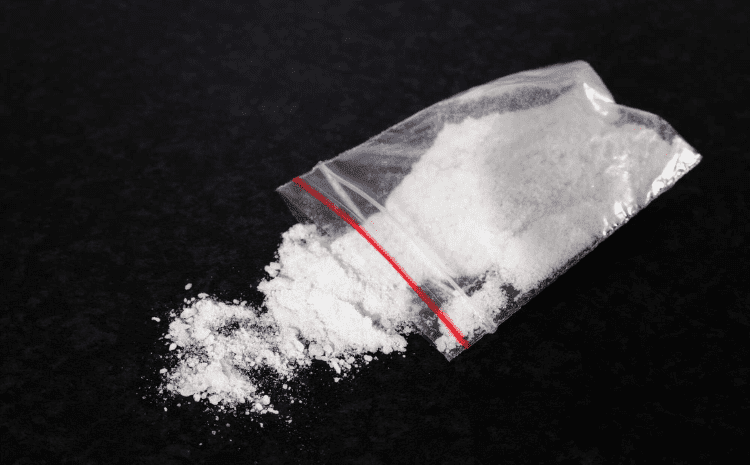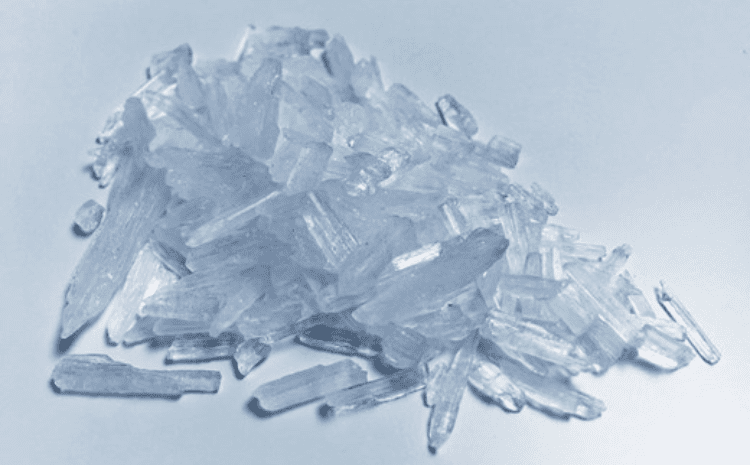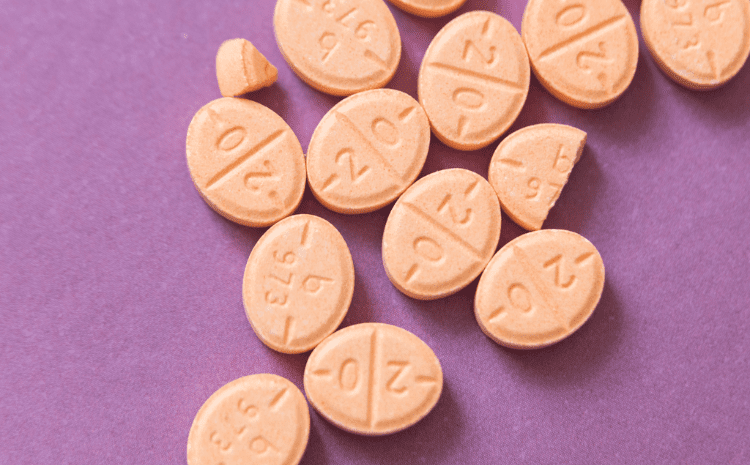11 Apr What Does Meth Look Like?
Methamphetamine, often called meth, is a very strong drug that more than 2.5 million people in the United States have used it. However, most people know very little about it, including how it looks or the dangers of meth abuse.
Meth can appear in many forms—ranging from powders to crystal shards—making it difficult to recognize. This lack of awareness adds to the drug’s danger, as individuals may not know what they’re encountering or the risks involved.
In this article, we will explore its various forms and dive into the risks associated with meth use. Understanding the different appearances of meth is crucial for both prevention and for providing help to those who need it.
What Is Meth?
Methamphetamine is a super strong stimulant that goes by various street names, including meth, Crystal, Glass, Ice, Crank, Speed, Zoom, Zip, and Yaba. This stimulant activates the central nervous system, making people feel extremely awake, alert, and energetic. It’s similar to methylphenidate, a medication for ADHD and narcolepsy.
However, due to its high potential for addiction and abuse, methamphetamine is classified as a controlled substance. This classification means it’s illegal to make, sell, or use meth without a specific, medically-approved reason.
The reason behind this strict regulation is meth’s powerful impact on the brain and body, which can lead to serious health issues, dependency, and even life-threatening conditions.
What Does Meth Look Like?
Meth can look very different depending on how it’s made and sold. In this section we will dive into the different types.
Powdered Meth
Powdered meth is a form of meth that looks similar to powdered sugar, but don’t be fooled—it’s far from sweet. This powder can be clear to white in color, making it look like other drugs in powder form, such as cocaine or heroin. However, sometimes, it appears pink or brown because of the red dye from certain ingredients used in making it.
People often snort or mix this powder with liquid to inject it into their veins because it acts fast.

Crystal Meth
When most people think of meth, they picture crystal meth. This form is seen as the “purest” because it usually doesn’t have any extra stuff mixed in. Crystal methamphetamine looks like shiny, see-through crystals or pieces of rock salt. It can be clear, grayish-white, or sometimes bluish-white. People often smoke crystal meth using a glass pipe, which lets the drug get into the blood fast. Some mix it into drinks for a quick energy boost or even put it into gelatin capsules to swallow.
After smoking, crystal meth leaves behind brown or black marks on the glass pipes or nearby surfaces. These are residues from the meth vapors. Places where meth is made, called labs, can also have these kinds of stains everywhere because of the meth “cooking” process.

Meth Tablets/Pills
Meth doesn’t just come in powder or crystal form; it can also be found as tablets or pills. A well-known prescription meth is called Desoxyn, which doctors sometimes give to people with ADHD to help them focus better. But, some people try to fake these prescriptions to sell the pills illegally. Usually, these meth pills are small, round, and white. However, illegal drug makers might change the color of their homemade pills to make them look more appealing, especially to younger users. These colorful pills might seem less dangerous, but they’re just as harmful.

Liquid Meth
Liquid meth is another form of this drug, though it’s not as commonly seen as others. This form happens when meth is dissolved in water or alcohol, which some people then drink or inject.
When meth is first dissolved, it’s usually clear, making it hard to spot. However, smuggled liquid meth might look yellowish or light brown and thick like syrup. It’s often hidden in bottles that look like regular drinks to trick people. Later, this liquid can be turned back into crystal meth by heating it up. Some prefer liquid meth because they can mix it into drinks or inject it, using it in ways that are risky and dangerous.
Understanding the Effects of Methamphetamine Abuse
Now that we’ve looked at the different forms meth can take, it’s crucial to understand the impact this drug has on individuals. From physical health problems to changes in behavior and mental health issues, the consequences of meth abuse are wide-ranging and serious.
Physical Symptoms of Meth Abuse
Meth can cause some serious health problems. One of the biggest issues is “meth mouth,” where a person’s teeth can get really damaged. If you’re worried someone might be using meth, here are some signs to look for:
- Dramatic weight loss or appearing very frail or thin
- Intense itching and scratching
- A weakened immune system and frequent illnesses
- Skin sores, rashes, and breakouts
- Pupil dilation
- Burns on the lips or fingers
- Rapid heart rate
- High body temperature
Seeing these signs in someone could mean they need help because of meth.
Psychological and Behavioral Changes
Using meth can also change how someone thinks and acts. Sometimes, people who start using meth already have mental health challenges, and using meth can make these problems worse. Meth affects the brain’s ability to feel happy naturally because it messes with dopamine, which is the chemical that helps us feel joy. If someone’s using meth a lot, they might not feel happy without it. This can lead to some serious mental health issues, like:
- Feeling really paranoid or anxious
- Acting aggressively
- Having trouble sleeping (insomnia)
- Seeing or hearing things that aren’t there (hallucinations)
- Losing touch with what’s real (psychotic behavior)
These changes can make life really hard, not just for the person using meth but also for their friends and family.
How to Recognize Meth Abuse?
If you are worried that someone you know might be using meth? Some signs that suggest meth abuse are:
- Changes in appearance: They might stop taking care of themselves and show signs of dental problems.
- Skin and hair issues: They might pick at their skin or hair obsessively.
- Eating habits: There could be a noticeable loss of appetite leading to weight loss.
- Eye changes: Their pupils may be dilated, and their eyes might move rapidly.
- Sleep problems: They may stay awake for days or have irregular sleeping patterns.
- Movements: You might notice jerky, erratic movements or constant talking.
- Financial problems: They may start borrowing money often, selling their stuff, or even stealing.
- Mood swings: Look for sudden angry outbursts or extreme mood changes.
- Paranoia and hallucinations: They might act paranoid or see and hear things that aren’t there.
Also, you might find drug paraphernalia like needles, burnt spoons, or surgical tubes around their living space. Recognizing these signs can be the first step in helping someone get the support they need.
Treatment Options for Meth Addiction
The best treatments for meth addiction usually involve behavioral therapies. For example, there’s a program called the Matrix Model that lasts 16 weeks. It includes several helpful strategies like therapy sessions, family education, one-on-one counseling, support from groups like AA, tests to check for drug use, and activities that keep patients busy without drugs. Another successful approach is called contingency management, which gives rewards to people who stay clean and attend treatment sessions. These treatments have really helped many people stop using meth.
Getting Help for Drug Addiction
The journey to overcome drug addiction begins with acknowledging the issue. It’s essential to recognize and admit to the struggle with addiction before any healing can start. This is often the hardest step, but it’s also the most crucial one for recovery.
Once the problem is acknowledged, the next step is detoxification. During detox, the body is cleansed of drugs under medical supervision. This process safely manages withdrawal symptoms and may include medications to ease discomfort. Healthcare professionals provide support throughout this challenging phase.
After detox, the next crucial step is finding a reputable drug rehab center. Choosing the right facility might seem daunting, but it’s vital for successful recovery. A good rehab center will create a personalized treatment plan tailored to the individual’s needs. This plan is the foundation for recovery, addressing not only the physical aspects of addiction but also the psychological ones.
While waiting for ecstasy to leave the system for drug tests, it’s crucial to acknowledge the risk of addiction. Regular ecstasy use can lead to dependency, which often co-occurs with the misuse of other substances like cocaine, alcohol, or marijuana. Addressing ecstasy addiction is not just about passing a drug test; it’s about improving overall health and social well-being.

No Comments